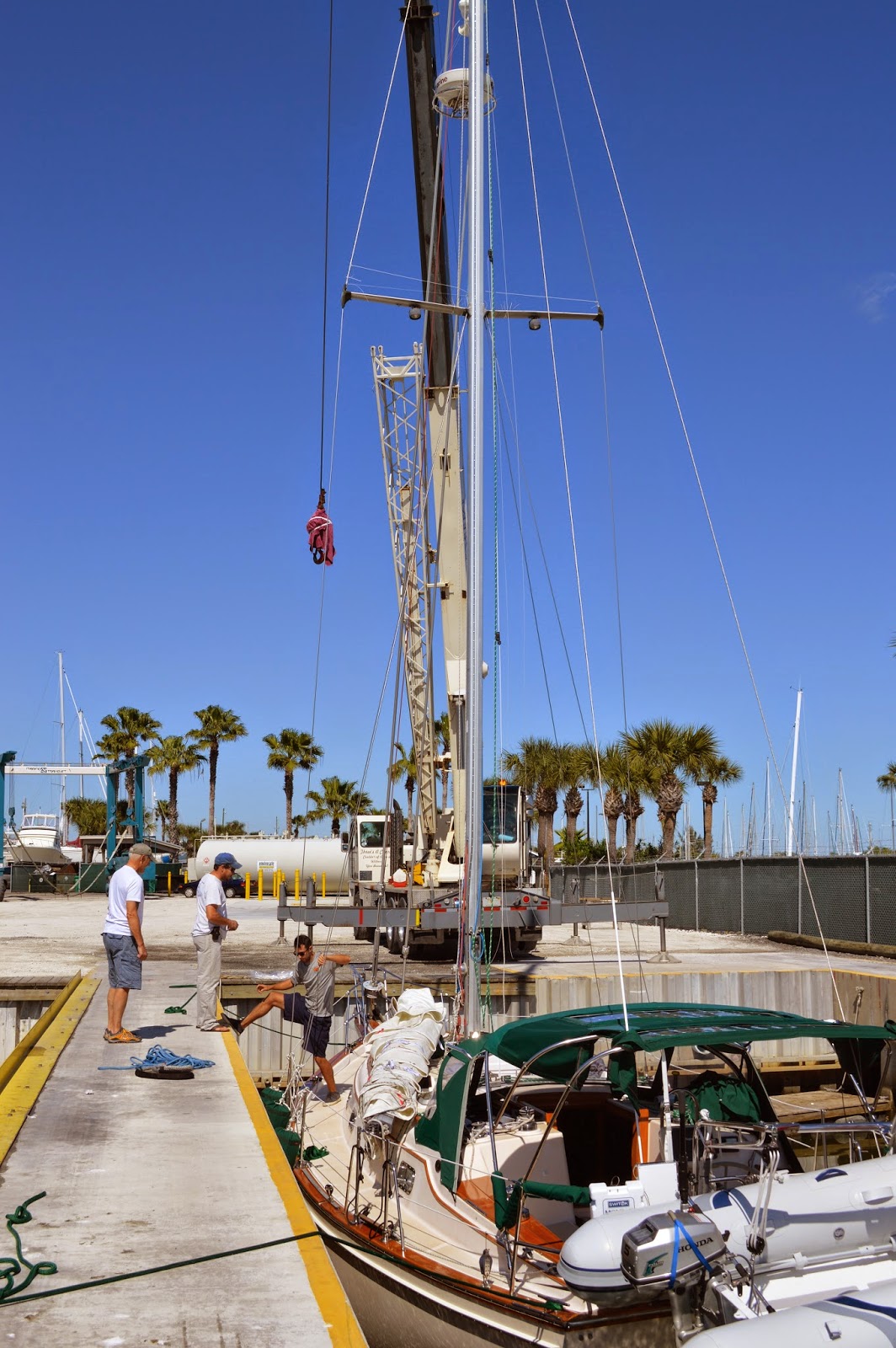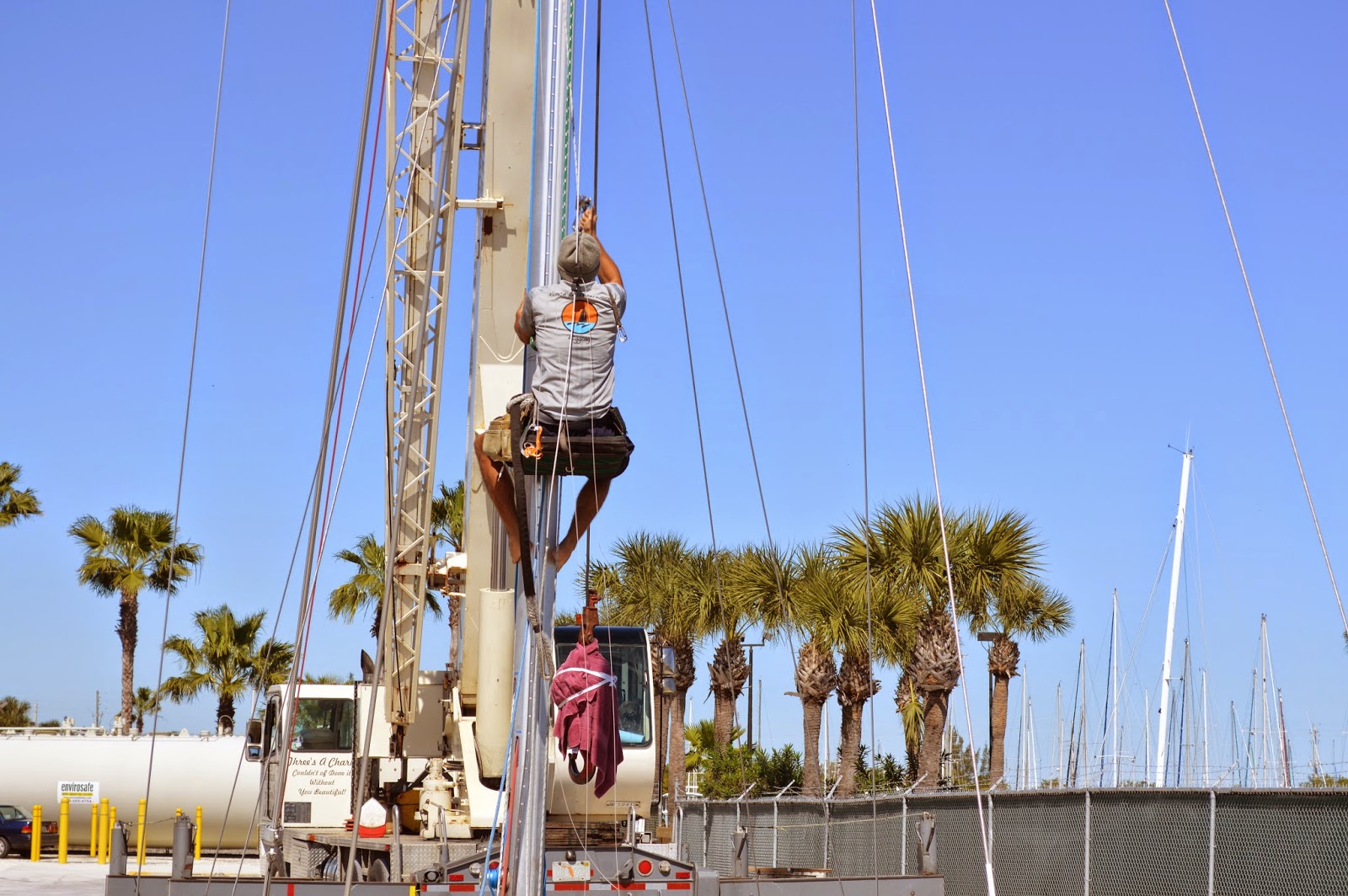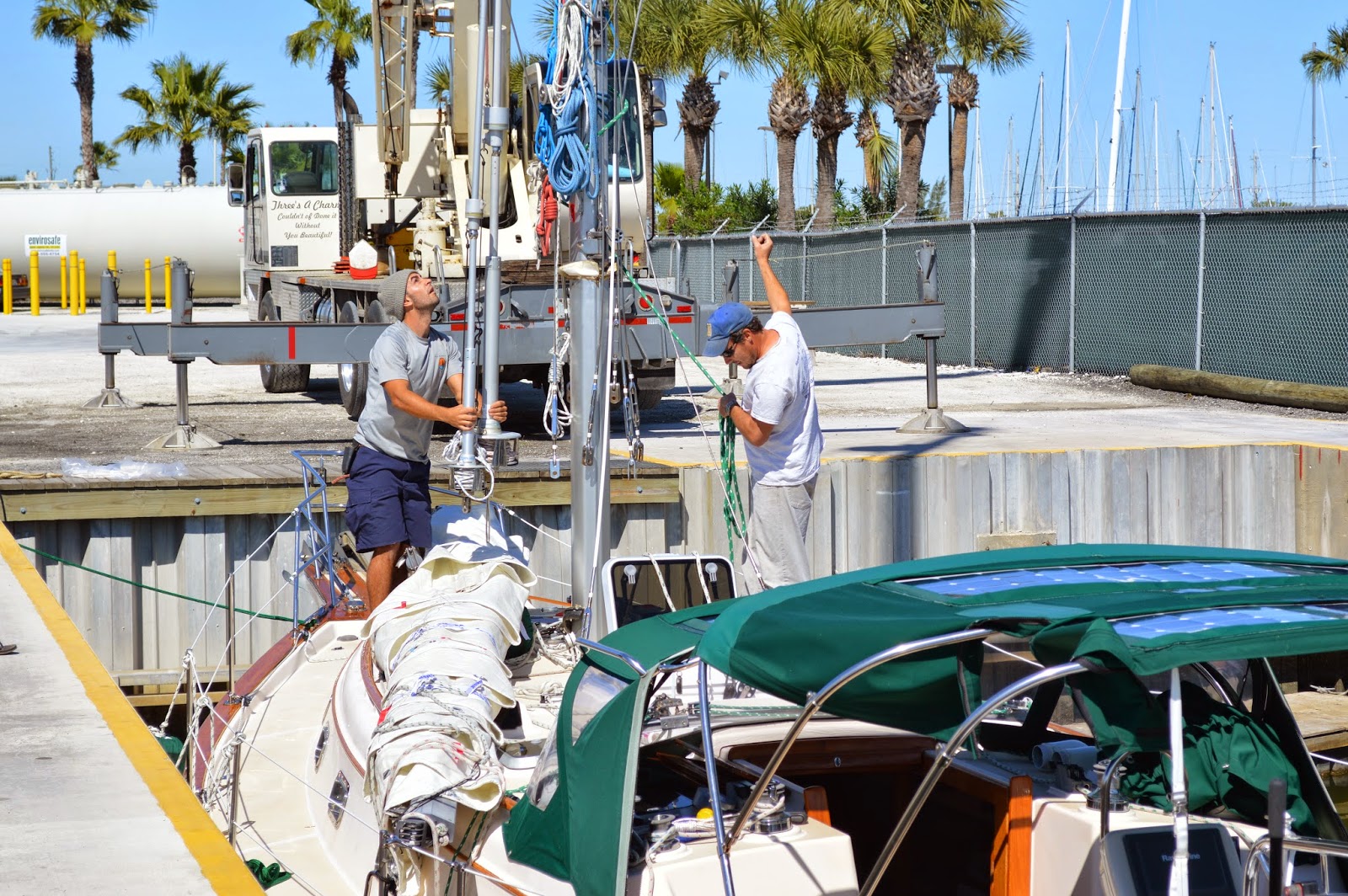The week before, we had taken our two foresails, the large genoa and small staysail, off the furlers (the mechanism that lets us easily wind the sail around the forestays, instead of dropping them on deck when not in use.) So - Dustin and Travis from Nance and Underwood (sail riggers) showed up around 10am to help us prepare to pull the mast. These guys had been on our boat a few weeks before, trying to run the wires through the mast from top to bottom, without success. The wires kept getting caught up inside. Thus, the reason for the mast to be pulled. The heavy cables (shrouds) that hold up the mast have to be disconnected, the wires that run through the mast that power anchor lights, spreader lights, radar, VHF, and the new cellular antenna have to be disconnected, and the boom (with the mainsail on it) has to be disconnected. These guys had all this done by noon and then the crane moved in to lift the mast out of its step, up through the deck of the boat, and then move it off and lay it down on two sawhorses. One real problem was that when we arrived we found that no one had ordered the crane! Everyone thought someone else was doing it. So, we asked around and found one, and luckily it was able to arrive within a couple of hours. More luck happened when the haul out slip was available an hour early. This all enabled us to get the job done in a single day, and not pay for techs another day.
This process from when the mast was ready to pull, to laying it on the sawhorses took about one hour. Travis is the "monkey" in the photos who climbs the mast (with a little help from Dustin who cranks him up on the halyard), and puts the lanyard in place, which is what the crane ball gets hooked to for pulling.
Once the mast was out, they went to work. The whole point of the wire was to add a cellular booster antenna to the top of the mast. This should help us get a better signal for cell service when not so close to land. In addition, we are going to upgrade our instruments next week and so a wire for the wind instrument was run, and we replaced our VHF wire which was pretty much the worse for wear. There are three (way too small) conduits (tubes) that run down the inside of the mast. The cellular wire is a thick wire and it kept getting wrapped around the other wires that were there and thus the reason they couldn't get it through when the mast was in place, as they were pretty much working blind. Besides those just mentioned, other wires that run through the mast include wires for lights - spreader or down-facing deck lights, an anchor light (the light at the top of the mast that you turn on when at anchor so other boats see you), running lights - so people see you when you are sailing at night and radar. Considering the boat is 20 years old, there has been a lot of new technology since it was built. Therefore, the conduits are probably undersized for today's standards, making it tough to add new stuff. While the guys were dealing with the wires, Greg changed out the spreader lights, Sharon added flag halyards (this is where you fly another country's courtesy flag, or a yacht club member flag), bird spikes were added wherever possible (refer to previous writings to see these are only minimally effective) and replaced a couple sheaves (these are the pulleys that the halyards run through just inside the top of the mast).
Then, once all the work was done, the entire process happens in reverse. The only delay in getting it all put back together was trying to run the wires inside the boat at the base of the mast when you had to go through this tiny hole. Finally, we stepped the mast back on its bed (placed it back on the boat, through the cabin top, and onto a frame in the bottom of the boat) and paid the crane guy at 5pm. However, that still meant all shrouds still had to be reconnected and tightened, the boom put back on and other various and sundry jobs that would take too long to explain on this already gone too long blog post!
Dustin and Travis are extremely knowledgable and did a great job. And they had great attitudes. Travis pretty much sang while he worked the entire time. And we all took the occasional break to check out the dolphins fishing nearby, the pelicans landing in the neighboring bush and the large snook swimming around the boat. We said a huge thanks to Dustin and Travis at about 6:30pm. They still had a two hour drive back to Fort Lauderdale. We still had to move the boat out of the haul out slip and back to the dock and finish up those loose ends. The other thing about working on a boat is that it is always in some cramped space where you have to contort your body to get the thing done. We were both wiped by the end of the day. Greg is still nursing the cuts and scrapes on his hands. We spent two more days figuring out wiring, connecting it all, installing a mast boot (the thing that assures no water gets through to the inside of the boat), and doing general clean up.
The temperature that night was in the high 30's. We were happy to be plugged in with the heat running. We left Ft Pierce by noon the next day to travel back to Vero Beach. The wind was blowing at 20 knots with gusts up to 25 and it was only about 50 degrees, without the wind chill. Though it is nothing like what our friends are dealing with in the Northeast, we were happy to be back in the slip and out of the wind by 2pm. All in all, a successful endeavor. We will let you know how the cell coverage is when we hit the Bahamas.































